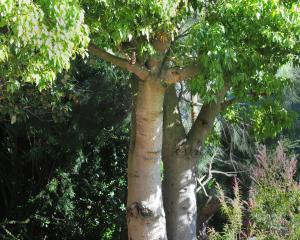
It is the same in that it is evergreen, and different in its new growth, flowers and berries.
Bearberry is widespread in circumpolar regions, more so in the northern hemisphere, and as the common name suggests, it is a source of food for bears when they awaken from hibernation in the spring.
It is a procumbent, woody shrub forming a mat up to 30cm high, with an indefinite spread.
The small shiny leaves are a lighter green underneath, quite stiff, and set closely together alternately along the stem, giving it a dense nature.
The new trailing stems can be red, more so in direct sunlight, going slowly brown with age.
Spring brings the urn-shaped pink or white flowers typical of the ericaceous family, often repeat-flowering throughout the summer.
The berries begin forming in midsummer and can last right through into spring, slowly ripening to a deep red.
Arctostaphylos `Wood's Red' is a hybrid of A. uva-ursi, which has inherited several desirable traits.
The new stems are bright red; it has more compact growth than the species, and an abundance of bright red berries.
Arctostaphylos `Wood's Red' can be seen growing in the Dunedin Botanic Garden's Rock Garden, and the peat garden in the Rhododendron Dell
Uva = grape, ursi = bear.
Easily propagated by semi-hardwood cuttings or layers.
Fast-growing, hardy and drought-resistant.
Great for covering banks and tumbling over walls.











